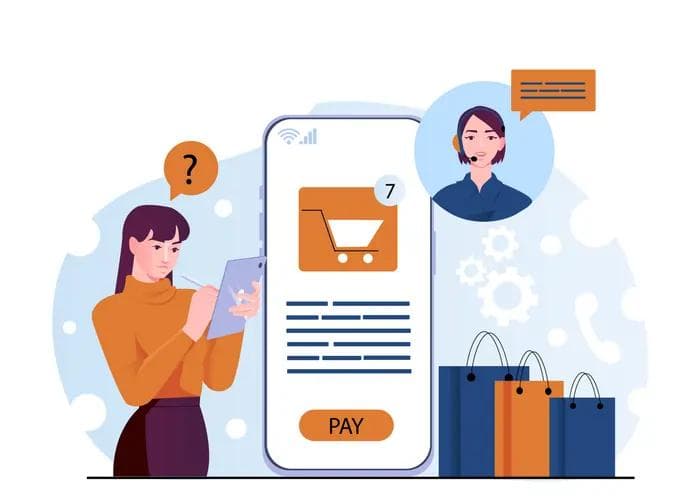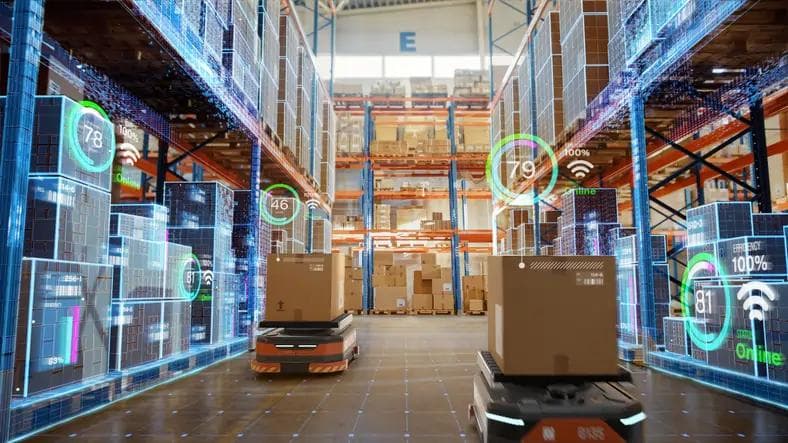Partnering for success: the symbiotic link between paytech and business
Partnering for success: the symbiotic link between paytech and business
Published by Jessica Weisman-Pitts
Posted on December 7, 2021

Published by Jessica Weisman-Pitts
Posted on December 7, 2021

By Petru Metzger, Head of Payments Delivery at Endava
As the fintech sector continues to expand, companies across banking and payments are striving for advantage. However, there’s an understanding that competitive advantage also lies in collective power. Perhaps the future isn’t dog-eat-dog but rather a collaborative environment where banks, fintechs, and businesses work together to drive the best products and services.
Payments remains the heartbeat of the fintech – and business – worldwide, but many businesses aren’t willing or able to develop the payments technology (paytech) needed to compete in today’s digital economy. Paytech has gone from being a ‘nice to have’ to a critical business function. Those quick to recognise this are seeking trusted partners to help integrate solutions through partnerships – taking payments from a vertical industry to a horizontal one (that is, an industry that crosses sectors).
We see this in payments across retail, insurance, travel, and automotive, to name a few, as well as through in-app invisible payments and other embedded technologies.
The future is cross-sector
Global demand for payments services means that fintechs – in particular payments companies – have grown rapidly through individual investment as well as mergers and acquisitions. The ‘bubble’ seen within fintech in recent years has created a complex technology landscape with many companies opting to partner to accelerate delivery of a super app reach in functionalities, rather than build themselves every service. The differentiation between players happens in user experience, use of data, and customer self-service.
As consumers increasingly move to a digital-first economy, so too do the industries that prop up that economy. Whether in retail, travel, insurance, etc., businesses across sectors are looking at how they can implement the best solutions to serve their customer base and edge out the competition. Payments is a small area for them, but one of the most complex and unknown by the businesses, and if done right can allow them to offer a better customer experience, lower the price, reduce fraud, increase sales, make customers loyal, and thrive as a business.
That’s where partners come in.
Bringing partners on means that businesses can focus their teams on strategic leadership rather than tactical implementation across their paytech offering. Furthermore, bringing partners in to do the ‘heavy lifting’ is cost effective, decoupling from legacy IT infrastructure and allows more agile ways of working that better match business and customer expectations. That approach – known as digital acceleration – is a critical component in successful partnerships, particularly as payments goes horizontal.
Accelerating with technology
When a trusted, chosen partner is leading the way, the business can also be more product-focused and respond better to regulatory changes, market opportunities and threats.
Implementing an agile, iterative approach to digital is key when working with partners because a one-size-fits-all approach rarely addresses nuanced business concerns. Every business has its own set of challenges, opportunities, and ways of working to contend with. The ability to examine, update, and improve the use of digital technologies to solve challenges allows companies to evolve and grow not with a one-and-done transformation, but an ongoing, continuous process: digital acceleration.
The process of breaking down digital projects as a series of small steps, each with practical deliverables means that fintechs and businesses can create the new digital processes that will allow them to launch, develop, and mature their digital business lines.
We recently helped a large fashion retailer implement a payments orchestration solution to connect to acquires, fraud providers, and alternative payments methods like open banking solutions or buy-now-pay-later providers. In integrating these solutions, we were able to support the business in reducing cost, increasing acceptance, and reducing fraud, all while providing the most compliant and best-in-class checkout experience for customers.
Harnessing the power of data
We can’t talk about partnerships without talking about the role of data.
Today, technology forms the foundation of our payment identity provided by banks, issuers or acquirers. How we identify ourselves at point of sale, when accessing our online accounts, or even logging into our phones is now inextricably linked to our personal data. That means data is now a key component of successful partnerships and paytech integrations – often, only a trusted partner can help businesses understand and make best use of this data in the most responsible way.
In the coming years, I fully anticipate that we’ll see products evolve into sophisticated, personalised payment options for consumers based on where they’re accessing the point of sale or making their payments. The evolution of payments is one increasingly becoming mobile-only led, biometrics used for payments and APIs first in both issuing and acquiring. Companies looking to integrate more closely within this ecosystem must bring in a payments partner to support and make the connections, lest they be left behind.
Conclusion
As the paytech industry continues to balloon and competition grows fiercer, I expect we’ll start to see major players competing over M&A. For those not ready or able to simply buy out the competition, partnering with paytech experts can be a great solution to ensuring businesses are able to cope with increasing customer demand, and changing behaviours caused by the escalating digital economy.
What we know is this: contactless, mobile powered, and embedded payments are becoming the norm. As people get more comfortable with using their data to pay for everyday items with products like wearables, cars, home assistants, fridges, etc, the uptick in contactless payments, and the solutions being developed by the GAFAs of the world prove that consumers will choose ease of payments, whatever they’re buying or wherever they’re buying it.
Therefore, becoming more ‘horizontal’ will be a crucial component for businesses looking to continue thriving, whether you’re a retailer, insurance provider, travel business, or part of the gig economy.
Companies across the digital economy would do well to integrate solutions that make these actions more natural for end users, and rather than starting from scratch enter a mutually beneficial relationship with paytech experts who have the experience, and understanding to scale quickly, and in a way that works for the business.
By Petru Metzger, Head of Payments Delivery at Endava
As the fintech sector continues to expand, companies across banking and payments are striving for advantage. However, there’s an understanding that competitive advantage also lies in collective power. Perhaps the future isn’t dog-eat-dog but rather a collaborative environment where banks, fintechs, and businesses work together to drive the best products and services.
Payments remains the heartbeat of the fintech – and business – worldwide, but many businesses aren’t willing or able to develop the payments technology (paytech) needed to compete in today’s digital economy. Paytech has gone from being a ‘nice to have’ to a critical business function. Those quick to recognise this are seeking trusted partners to help integrate solutions through partnerships – taking payments from a vertical industry to a horizontal one (that is, an industry that crosses sectors).
We see this in payments across retail, insurance, travel, and automotive, to name a few, as well as through in-app invisible payments and other embedded technologies.
The future is cross-sector
Global demand for payments services means that fintechs – in particular payments companies – have grown rapidly through individual investment as well as mergers and acquisitions. The ‘bubble’ seen within fintech in recent years has created a complex technology landscape with many companies opting to partner to accelerate delivery of a super app reach in functionalities, rather than build themselves every service. The differentiation between players happens in user experience, use of data, and customer self-service.
As consumers increasingly move to a digital-first economy, so too do the industries that prop up that economy. Whether in retail, travel, insurance, etc., businesses across sectors are looking at how they can implement the best solutions to serve their customer base and edge out the competition. Payments is a small area for them, but one of the most complex and unknown by the businesses, and if done right can allow them to offer a better customer experience, lower the price, reduce fraud, increase sales, make customers loyal, and thrive as a business.
That’s where partners come in.
Bringing partners on means that businesses can focus their teams on strategic leadership rather than tactical implementation across their paytech offering. Furthermore, bringing partners in to do the ‘heavy lifting’ is cost effective, decoupling from legacy IT infrastructure and allows more agile ways of working that better match business and customer expectations. That approach – known as digital acceleration – is a critical component in successful partnerships, particularly as payments goes horizontal.
Accelerating with technology
When a trusted, chosen partner is leading the way, the business can also be more product-focused and respond better to regulatory changes, market opportunities and threats.
Implementing an agile, iterative approach to digital is key when working with partners because a one-size-fits-all approach rarely addresses nuanced business concerns. Every business has its own set of challenges, opportunities, and ways of working to contend with. The ability to examine, update, and improve the use of digital technologies to solve challenges allows companies to evolve and grow not with a one-and-done transformation, but an ongoing, continuous process: digital acceleration.
The process of breaking down digital projects as a series of small steps, each with practical deliverables means that fintechs and businesses can create the new digital processes that will allow them to launch, develop, and mature their digital business lines.
We recently helped a large fashion retailer implement a payments orchestration solution to connect to acquires, fraud providers, and alternative payments methods like open banking solutions or buy-now-pay-later providers. In integrating these solutions, we were able to support the business in reducing cost, increasing acceptance, and reducing fraud, all while providing the most compliant and best-in-class checkout experience for customers.
Harnessing the power of data
We can’t talk about partnerships without talking about the role of data.
Today, technology forms the foundation of our payment identity provided by banks, issuers or acquirers. How we identify ourselves at point of sale, when accessing our online accounts, or even logging into our phones is now inextricably linked to our personal data. That means data is now a key component of successful partnerships and paytech integrations – often, only a trusted partner can help businesses understand and make best use of this data in the most responsible way.
In the coming years, I fully anticipate that we’ll see products evolve into sophisticated, personalised payment options for consumers based on where they’re accessing the point of sale or making their payments. The evolution of payments is one increasingly becoming mobile-only led, biometrics used for payments and APIs first in both issuing and acquiring. Companies looking to integrate more closely within this ecosystem must bring in a payments partner to support and make the connections, lest they be left behind.
Conclusion
As the paytech industry continues to balloon and competition grows fiercer, I expect we’ll start to see major players competing over M&A. For those not ready or able to simply buy out the competition, partnering with paytech experts can be a great solution to ensuring businesses are able to cope with increasing customer demand, and changing behaviours caused by the escalating digital economy.
What we know is this: contactless, mobile powered, and embedded payments are becoming the norm. As people get more comfortable with using their data to pay for everyday items with products like wearables, cars, home assistants, fridges, etc, the uptick in contactless payments, and the solutions being developed by the GAFAs of the world prove that consumers will choose ease of payments, whatever they’re buying or wherever they’re buying it.
Therefore, becoming more ‘horizontal’ will be a crucial component for businesses looking to continue thriving, whether you’re a retailer, insurance provider, travel business, or part of the gig economy.
Companies across the digital economy would do well to integrate solutions that make these actions more natural for end users, and rather than starting from scratch enter a mutually beneficial relationship with paytech experts who have the experience, and understanding to scale quickly, and in a way that works for the business.
Explore more articles in the Business category











